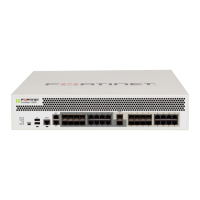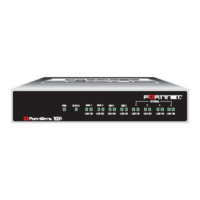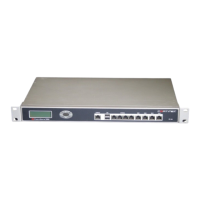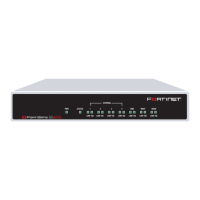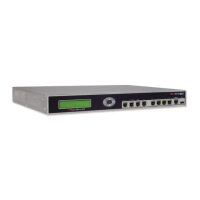Using a wireless network Setting up the FortiWiFi-60 as an Access Point
FortiGate-60 series and FortiGate-100A FortiOS 3.0 MR4 Install Guide
01-30004-0266-20070831 73
Changing the operating mode
To change the wireless operating mode
1 Go to System > Wireless > Settings.
2 For the Operation mode, select Change
3 Select an operation mode and select OK.
Setting up the FortiWiFi-60 as an Access Point
This section describes how to quickly configure the FortiWiFi-60 unit as an AP to
allow network access for wireless workstations located on the same wireless LAN
as the unit. It also describes how to configure firewall policies and wireless
security features to provide a secure wireless environment. For initial setup, use a
desktop computer on the internal network with TCP/IP set as a DHCP client
This section contains the following steps:
• Set the DHCP settings
• Set the security options
• Configure the firewall policies
Set the DHCP settings
Configure a DHCP server for the FortiWiFi-60 WLAN interface. As a DHCP
server, the interface dynamically assigns IP addresses to hosts on the network
connected to the WLAN interface.
To configure the FortiWiFi-60/60M to be a DHCP server
1 Go to System > DHCP > Service.
2 Select the blue triangle to expand the WLAN options.
3 Configure the DHCP server settings:
4 Select OK.
Name: Enter a name of the DHCP sever. For example, DHCPSever_1.
Enable: Select to enable the DHCP Server.
Type: Select regular unless you are configuring for remote clients who
will have an IPSec VPN connection to the WLAN interface.
IP Range: Enter the IP address of the WLAN to configure the IP address
range. For example, 10.10.80.1 to 10.10.80.20.
Network Mask: Enter the network mask you created in Table 8 on page 33.
Domain: Enter domain name, for example, www.fortinet.com.
Lease Time: The expiry date of an IP address. This feature specifies either an
unlimited or limited timeframe of an IP address.
Advanced: Use only to specify several DNS servers. This is the DNS that the
wireless clients will use when accessing the Internet.
Note: The IP range must match the subnet address of the network where the DHCP
request was received. Usually this would be the subnet connected to the WLAN interface.
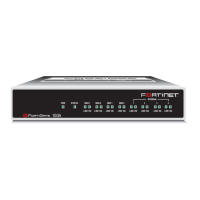
